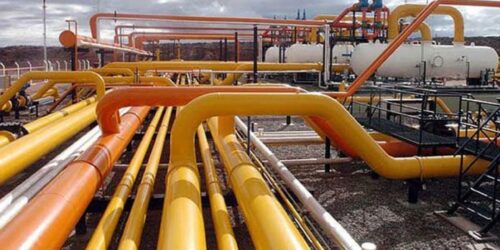The power sector will continue to be the main driver of natural gas demand in the Middle East for years to come despite global plans to use more renewables and hydrogen as part of the energy transition to reduce carbon emissions.
Power generation will remain about 40% of the region’s gas demand this year into 2040, according to S&P Global Platts Analytics.
Iran will remain the biggest user in the region, as the country’s gas use for power more than doubles by 2040.
The 3.1% increase in gas demand in the region in 2021 will be the first gain after a record two consecutive years of declines driven by COVID-induced demand destruction and a relative slowing of industrial activity.
“Power sector demand will grow because of new power plant additions, switching of liquids to gas and increased top line power demand,” Samer Mosis, manager of global LNG analytics at Platts Analytics, said.
“Hydrogen will be on the far margin of that and solar capacity in the region will continue to grow but from an extremely low base. There is space for both renewables and gas.”
While Saudi Arabia has successfully reduced direct crude burn, pushing gas to nearly 60% of fuel consumed in the country’s power sector in 2020 from 54% in 2018, renewables in power generation have lagged.
Riyadh had only 310 MW of operational renewable capacity by early 2021 out of plans to develop 27.3 GW by 2023, according to Platts Analytics.
Uses of hydrogen made from natural gas feedstocks remain in nascent stages, while transportation demand from cars and bunkers is forecast to climb at the fastest rates, albeit from a small base.
Bright spots
Iran, Saudi Arabia and Iraq are the bright spots for Middle East gas demand over the next 10 years, according to Siamak Adibi, head of FGE’s Middle East gas team.
While switching from crude burn to gas will be the main drivers in Saudi Arabia and Iraq, Iran’s growth will also be tied to increased petrochemicals output, he said.
Gas demand is set to climb 6.6% in Saudi Arabia this year, 5.0% in Kuwait and 3.8% in Israel, according to Platts Analytics, as the countries emerge from the reduced economic activity that COVID-19 brought in 2020.
Gas demand for power generation will expand 4.2% this year, while bunkers and cars applications will grow for years to come, according to Platts Analytics.
In car applications, more gas will be used in compressed natural gas vehicles or even in fuel cells, while bunkers will show growth on expectations that the UAE in particular can be a hub for LNG-fueled bunkering, such as at the port of Fujairah.
“As these countries build out their gas resources there will be an increasing number of methane-based solutions in the marine space, including LNG but also methanol and ammonia sourced from natural gas or even blue hydrogen,” said Mark Mozur, lead analyst for world energy demand at Platts Analytics.
“This is part of a broader outlook on marine fuels that we have constructed, namely that natural gas will see its share of the bunker space grow substantially over the coming decades.”
Field developments
The rising gas demand in the region has prompted national oil companies to focus on gas field development.
The UAE, in particular, is seeking gas self-sufficiency and Abu Dhabi National Oil Co. is leading efforts in OPEC’s third biggest producer to attain this goal.
ADNOC is tapping its unconventional gas resources to meet its target, while Saudi Arabia is reportedly looking to foreign investment to help develop its huge Jafurah unconventional gas field.
Qatar, with the world’s lowest costs to produce LNG, is expanding its gas production to feed further development of its vast offshore North Field.
Qatar and Oman are set to be the main LNG exporters from the region over the next few years, with minimal shipments from the UAE set to end in 2031 while Iran remains a wildcard, with strong LNG export potential inhibited by an overwhelmingly prohibitive geopolitical environment, Platts Analytics said.
Iran’s new oil minister Javad Owji, former head of National Iranian Gas Co., wants to focus on gas, including boosting exports, FGE’s Adibi said.
There is a chance that Iran will look to open up trade with neighbors, including reviving gas imports from Turkmenistan and extending a gas export contract with Turkey which expires in 2026, he said.
There is also a “slim chance” Iran may seek to revive gas exports to Gulf neighbors “as market conditions have dramatically changed since the last decade,” he said.
The 1,800 km pipeline project to carry gas from Iran’s South Pars field to Pakistan also may be revived under the new minister, he said.
Some Gulf countries want to get involved on the production side of the energy transition to meet global demand.
Saudi Aramco’s chief technology officer Ahmed al-Khowaiter hopes by 2030 to have enough hydrogen market demand for the company to cater to it at a world scale, although he has declined to disclose the target volume.
And ADNOC is teaming up with partners to produce blue ammonia that is derived from gas-based hydrogen and nitrogen, including a 1 million mt/year facility in its industrial hub in Ruwais that is expected to be online by 2025.
While gas prices are rising in many parts of the world, the Middle East is protected.
“The Middle East does not have market-based gas pricing, it is all government regulated prices so any impact will be absorbed by the government,” Mosis said. “We may see a little switching to other fuels like fuel oil on the margin but not massively so given the need to run baseload gas power plants.”






